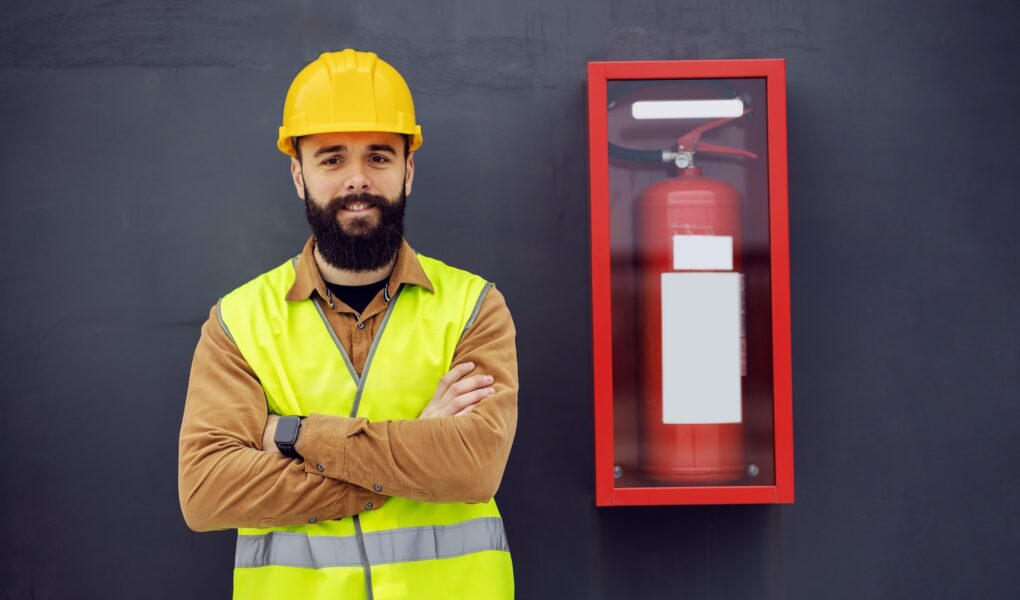To lessen the risks of fire in your house, it is crucial to prepare in advance. You can do this by preparing a safety plan. Every fire safety plan will be different, and you should consider the unique situations you face. For example, the plan you create for yourself might be different from the one your neighbor uses.
Smoke Alarms
Smoke alarms are a great way to inform people about a fire in your home. They work by detecting chemicals in smoke and emitting a loud beeping noise. This is enough to wake most people up. It’s also a good idea to test your smoke alarms monthly. To do this, press the button on the device until it beeps. Make sure to follow the manufacturer’s instructions.
When choosing a smoke alarm, you should make sure you choose a sealed unit so that it can’t be tampered with before reaching you. Traditional battery smoke alarms usually require a replacement battery every year. Typically, these require 9-volt batteries. It would help if you kept a spare battery handy. You should also opt for alarms linked to one another, which is handy if you have a large house.
Smoke alarms and safety tips from fire safety and prevention Texas are a great way to save your home from fire. They can prevent serious injury and death. People who do not use smoke alarms are twice as likely to die during a house fire. When purchasing a smoke alarm, follow the manufacturer’s instructions for installation and testing. It’s also a good idea to install your smoke alarms in the ceiling, as this is where the smoke tends to build up.
Proper Storage of Combustibles
Proper storage of flammables can reduce the likelihood of a fire. Flammable liquids, such as gasoline and diesel fuel, can ignite when exposed to air. These liquids must be appropriately handled and stored in a fume hood. They also must be properly labeled.
Combustible materials should not be stored close to electrical and heating appliances. Disposal of items that are no longer in use is also essential. Compiling dust and other contaminants on combustible materials can lead to a fire or explosion.
Proper storage is vital to fire safety and prevention. Fires spread quickly and can be costly. Proper storage will reduce the risk of fires and other serious injuries. Fire marshals respond to approximately 160,900 fires a year. The vast majority of these fires begin with an uncontrolled source of fuel. Sadly, the consequences of these fires are tragic.
In addition to proper ventilation, flammable liquids should be stored in an area free of incompatible materials. Environmental rooms, for instance, can contain many ignition sources and little to no outside air circulation. When possible, only small amounts of flammable materials should be stored in these rooms. In addition, flammable liquids and materials should be stored in UL-approved cabinets. Do not store flammable liquids in unmarked cabinets or near sinks and fume hoods.
Practice Your Fire Escape Plan
A fire escape plan is essential to keep you and your family safe during a fire emergency. Make sure you have two escape routes for every room of your home. Then, practice getting out of your home in under two minutes. You can download an app that helps you practice this. It’s also essential to train your children to escape safely on their own. Practice your escape plan before the smoke alarm goes off.
Once you’ve created your fire escape plan, draw it out on paper or use an app. Mark two ways out of each room and practice getting out. You’ll want to be able to exit through windows and doors in the event of a fire. In addition, check smoke alarms to ensure they work properly. Also, choose a meeting place outside the home, preferably in front of the building. And remember to get your fire department’s phone number so you can call them if needed.
Cooking fires are among the leading causes of home fires in Canada. These types of fires spread rapidly. One minute of cooking can lead to a fire that could be life-threatening. Children tend to hide during fires, so it’s essential to ensure they know how to get out safely.
Preventing Wildfires
There are several simple steps you can take around your property to minimize your risk of a wildfire. These include trimming dead palm fronds from trees, removing combustible materials around the home, and watering mulch. The more you do these steps, the less likely you’ll experience a wildfire on your property.
First, understand the common causes of wildfires. This knowledge will help you prevent or reduce your risk of a fire. It’s also a good idea to follow local fire prevention guidelines whenever possible. For example, never leave a campfire unattended. Also, make sure you put out your fire thoroughly after using it. Likewise, keep loose branches and kindling from lying around. It would be best if you also cleaned up your campsite as much as possible.
Preventing wildfires is everyone’s responsibility, and you can do your part by educating yourself and your community about the dangers of wildfires. Public education and awareness campaigns are a great way to get the word out about the dangers of wildfire. Other effective measures include implementing burning regulations, regulating land use, and conducting regular equipment inspections.




